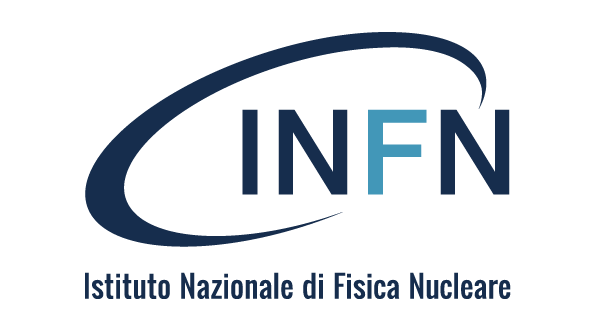PEOPLE
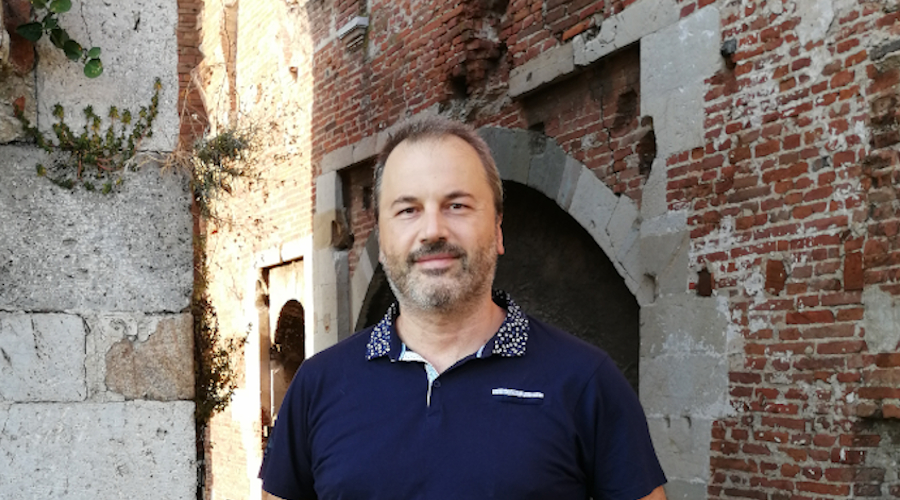
POSSIBLE CLUES ON NEW PHYSICS
IN MUON BEHAVIOUR
Interview with Graziano Venanzoni, INFN researcher at the Pisa division, and co-spokesperson for the Muon g-2 collaboration
Last April 7, media from all over the world reported on the first highly anticipated results obtained by Muon g-2, the experiment hosted in the main US particle physics laboratory, Fermilab, dedicated to precisely measuring the anomalous magnetic moment of the muon, a heavy cousin of the electron. The analysis of the first data acquired by the experiment, carried out by the international collaboration responsible for Muon g-2, has provided new evidence for a discrepancy with the predictions of the Standard Model. This model is the imposing theoretical structure that we use today to describe the nature of sub-atomic particles and their behaviour. Despite the fact that it has not yet reached the statistical significance necessary to obtain the status of “discovery”, the result could represent an exciting clue as to the presence of phenomena and forces that are yet unknown. If confirmed, the result could also anticipate one of those crucial steps in the history of physics and scientific thought. Launched in 2017, Muon g-2 has benefitted from an important contribution from INFN. As well as being one of the founders of the experiment, INFN continues to perform a central role within the collaboration through the participation of its Naples, Pisa, Rome 2 and Trieste divisions, of the Udine associated group and of the Frascati National Laboratories. In particular, the Italian researchers have provided an essential contribution both in the implementation and data acquisition phase of the experiment and in the data analysis phase. Further evidence of the centrality of INFN activities is the appointment, in September 2020, of Graziano Venanzoni, INFN researcher at the Pisa division, to the role of co-spokesperson for the Muon g-2 collaboration.
Graziano Venanzoni, the Muon g-2 experiment is dedicated to precisely measuring the muon anomalous magnetic moment. Can you please explain to us which muon behaviour this parameter refers to and why it is so important to know its exact value?
The charged elementary particles that have an intrinsic angular moment called spin, which we can think of as the rotation motion of a spinning top, also possess a magnetic moment, i.e. they produce a magnetic field just the same as a compass needle’s. ...
NEWS
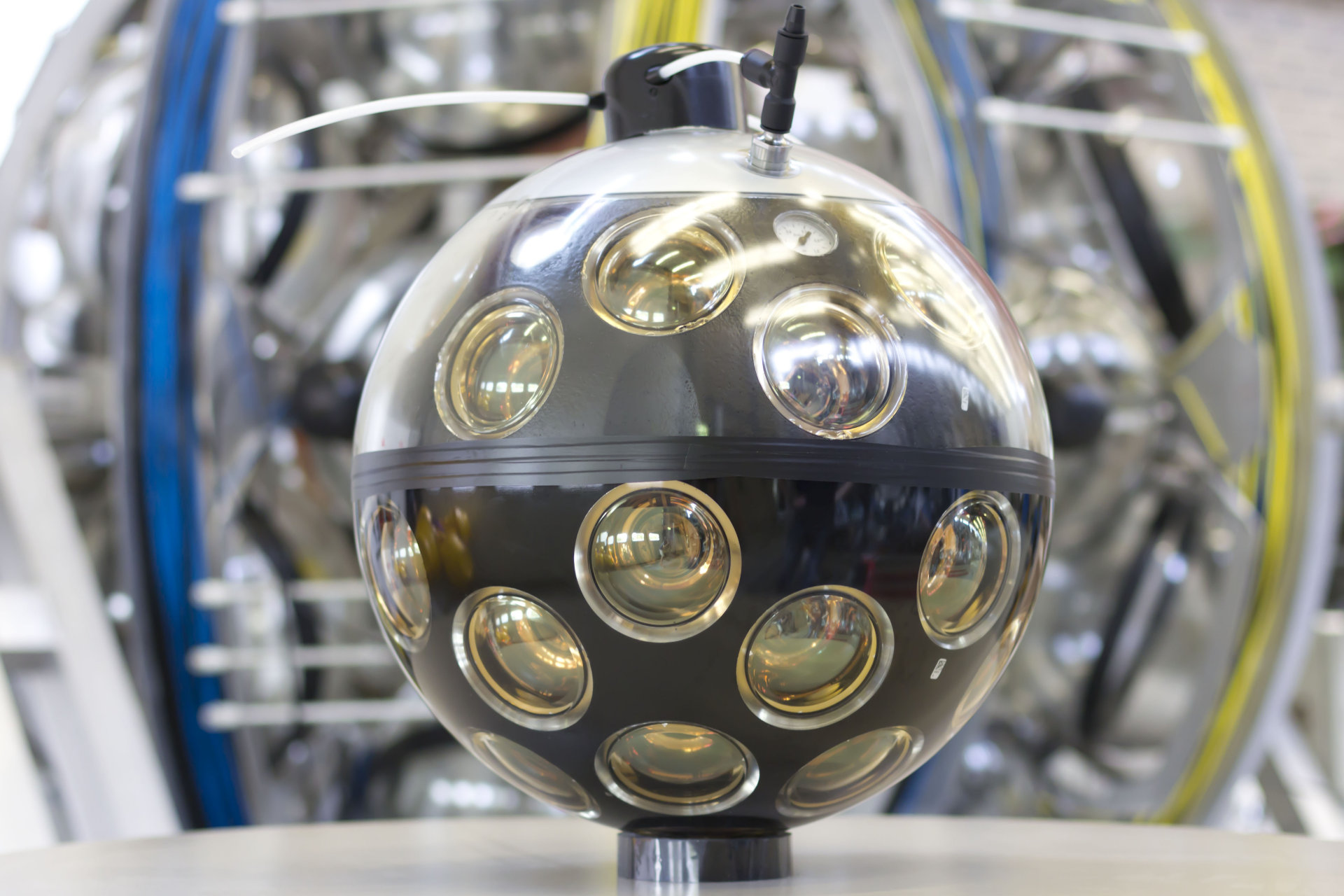
RESEARCH INFRASTRUCTURES
NEUTRINOS: FIRST SIX COMPONENTS OF THE KM3NET UNDERSEA TELESCOPE INSTALLED AT A DEPTH OF 3500 METRES
The expansion of the IDMAR submarine infrastructure – coordinated by the INFN Southern National Laboratories and co-funded by the Sicily Region - with a new junction box delivering electricity and allowing submarine connections and the installation of five new strings of detectors of the neutrino telescope KM3NeT/ARCA were concluded with success. ...
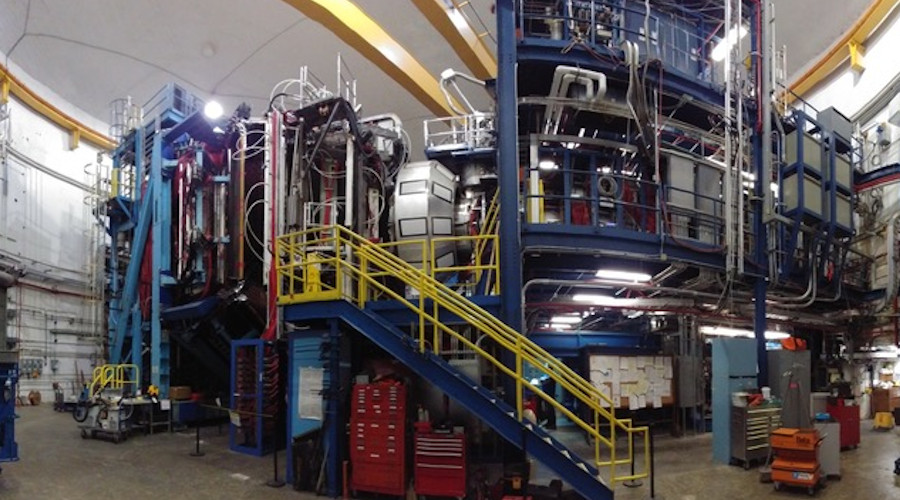
RESEARCH
THE CLAS EXPERIMENT SHEDS LIGHT ON THE INNER STRUCTURE OF NEUTRONS AND PROTONS
A study conducted by an international group of researchers based on the data collected by the CLAS detector, an experiment housed in the Jefferson Lab until 2018 and run with a decisive INFN contribution, provides new details on the inner structure of nucleons (protons and neutrons composing the atomic nucleus). The study was published ...
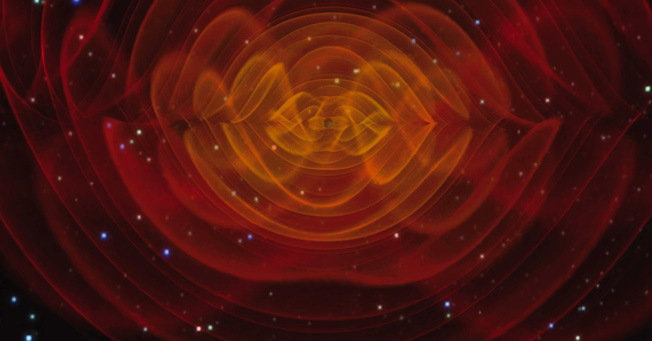
RESEARCH
GRAVITATIONAL WAVES: THE ROADMAP FOR THE NEXT 20 YEARS PUBLISHED ON NATURE
The scientific journal Nature recently published a review dedicated to the near future of gravitational waves research: one of the most exciting research areas in recent years. This research field was characterised by epochal discoveries, such as the first observation of gravitational waves announced by the LIGO-Virgo collaborations in February ...
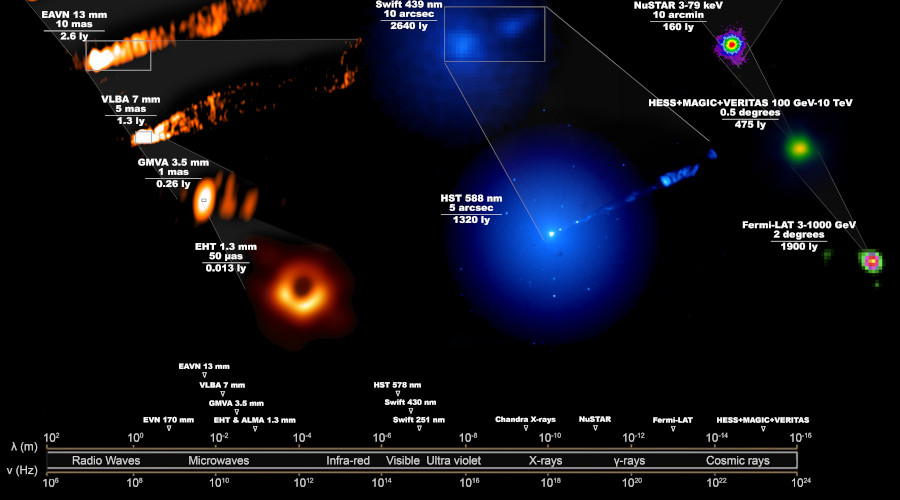
INTERNATIONAL COLLABORATIONS
EARTH AND SPACE TELESCOPES UNITED FOR THE LONGEST OBSERVING RUN OF A BLACK HOLE
A new and extended observation run promises to give an unprecedented view of the black hole at the centre of the M87 galaxy, the first image of which was produced in 2019 by the Event Horizon Telescope (EHT) collaboration, and of the system that feeds it. The data were collected between the end of March and mid-April 2017 by a team of ...
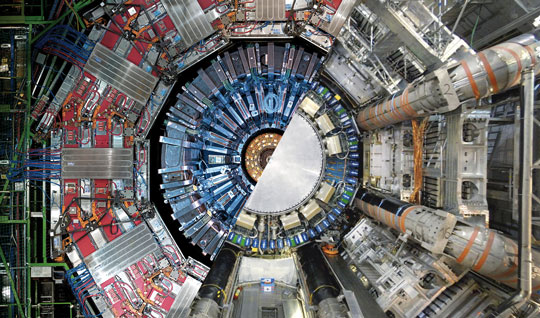
TECHNOLOGICAL RESEARCH
EUROPEAN R&D PROJECT FOR FUTURE DETECTORS, AIDAinnova KICKS OFF
AIDAinnova, a research and technological innovation project for developing new solutions for future particle detectors, is at the starting gates. Approved last November by the European Commission, with funding of 10 million euro, AIDAinnova recently gathered more than 300 experts to discuss activities and plan the next steps for achieving ...
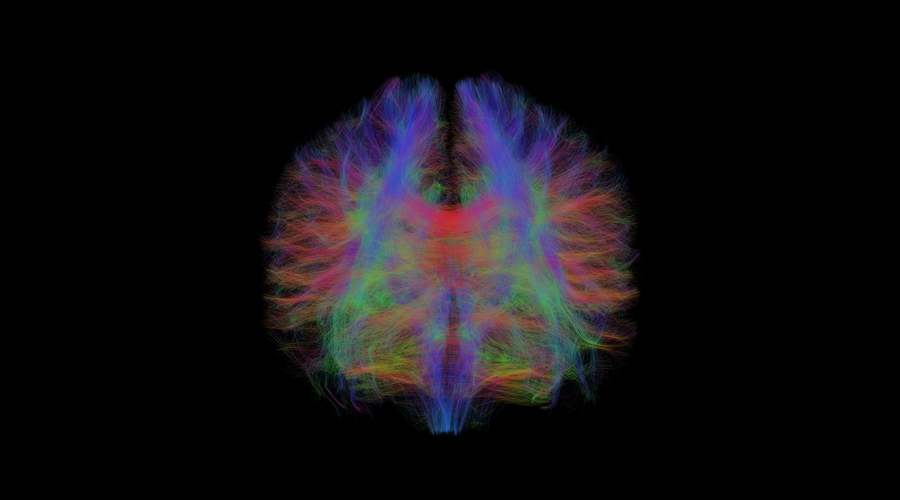
COLLABORATION AGREEMENTS
INFN AND SANTA LUCIA IRCCS FOUNDATION WORK TOGETHER TO APPLY MEDICAL PHYSICS TO NEUROSCIENCE
A collaboration between INFN and the Santa Lucia IRCCS Foundation of Rome, the leading Italian research institute in neuroscience, has been signed. The goal is to study life sciences, exploiting the skills and tools of medical physics, and to develop new diagnostic tools to make tests for preventing neurological diseases more accessible and effective. ...
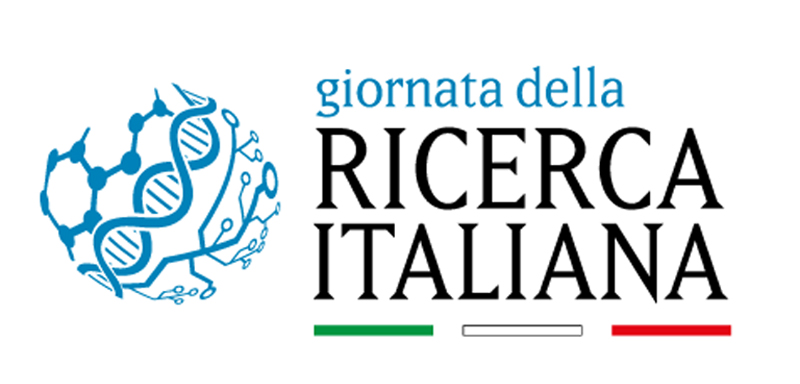
PUBLIC ENGAGEMENT
INFN FOR THE ITALIAN RESEARCH DAY IN THE WORLD
On April 15, on the anniversary of the birth of the Italian genius Leonardo da Vinci, the fourth Italian Research Day in the World was celebrated. This day was instituted in 2018 by the Ministry of Education, University and Research, in cooperation with the Ministry of Foreign Affairs and International Cooperation, and the Ministry of Health, ...
FOCUS
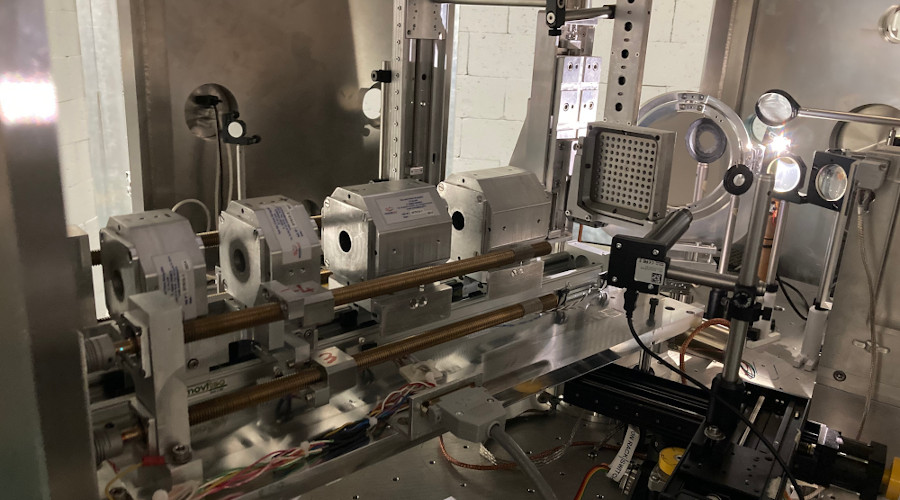 LPA2: PROTONS ACCELERATED WITH LASERS FOR HADRONTHERAPY
LPA2: PROTONS ACCELERATED WITH LASERS FOR HADRONTHERAPY
A recent result obtained by the LPA2 (Laser Driven Proton Acceleration Applications) experiment could pave the way for the creation of a new generation of more effective and compact medical devices for hadrontherapy that exploit charged particles such as protons to destroy tumour cells. The experiment is funded by the INFN National Scientific Committee dedicated to technological and interdisciplinary research (CSN5), in collaboration with the National Research Council (CNR) National Institute of Optics (INO). Thanks to the use of a laser that can generate very short pulses, the INFN researchers managed to produce, select and transport a beam of protons with optimal intensities, and therefore with optimal energies, for oncological treatments. The main aim of LPA2 is to form and guide proton beams generated by lasers with enough energy and precision on tumour cells and in less time, thus optimising the efficacy of treatment sessions and their length. The LPA2 project constitutes the first application, in Italy, of a beam of protons produced by laser and guided towards a precise irradiation point. The experimental run was carried out at the Intense Laser Irradiation Laboratory (ILIL) of the INO, where a laser system able of generating very short, high-power (up to 200 terawatt) pulses has been operating since 2018. The system is funded by the CNR in the context of the development of the European “Extreme Light Infrastructure” (ELI). Using the laser to activate a mechanism called Target Normal Sheath Acceleration (TNSA), it was possible to produce and accelerate a proton beam with intensity that is of interest for future important biomedical applications. ...
TAKE PART IN
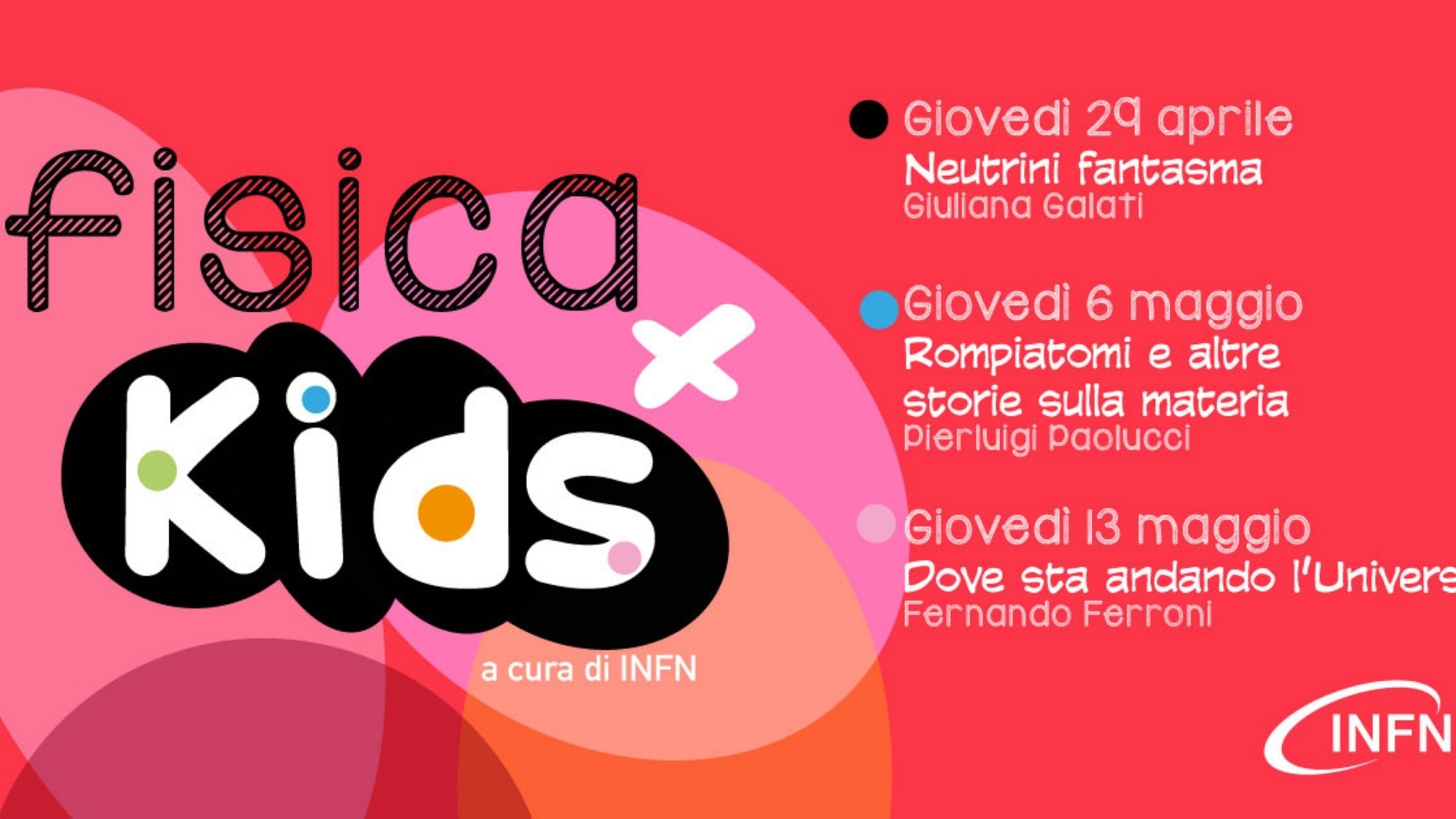 FISICA X KIDS: TELLING CHILDREN ABOUT SCIENCE
FISICA X KIDS: TELLING CHILDREN ABOUT SCIENCE
From “ghost neutrinos” and “atom-breakers” to a trip through the universe: Fisica x Kids is a series of online events streamed live every Thursday at 11:00 on the INFN Facebook page and Youtube channel. This series is dedicated to children and teenagers from 8 at 12 and the aim is to bring them closer to some basic physics themes with animations, drawings and direct interaction with researchers.
Fisica x Kids started last April 29 with "Neutrini Fantasma” with Giuliana Galati, researcher at the University of Bari and INFN and coordinator of the CICAP Course for Mystery Investigators, then continued on May 6 with “Rompiatomi e altre storie sulla materia” with Pierluigi Paolucci, researcher at the INFN Napoli division. Both events saw a strong participation of children and teenagers, with more than 200 classes connected from all over Italy. Thursday 13 May at 11:00 Fernando Ferroni, professor of physics at the GSSI and researcher at the INFN Gran Sasso National Laboratories, will close the series, leading the children on a journey through the cosmos, towards its most remote corners; an adventure among stars, planets and black holes, “Dove sta andando l'universo” . (in Italian)
Facebook| Youtube (in Italian)
FROM MAY 17 TO 19: INFN JOINS PINT OF SCIENCE 2021
“Pint of Science”, the festival where researchers speak about their research in bars and pubs, is back this year in an online editon. INFN researchers will join the festival.
All the events will be avalaible on the Facebook page and on the Youtube channel of Pint of Science Italia. (in Italian)
Facebook| Youtube (in Italian)
MAY 19, 5:00 PM: THE HIDDEN MUSIC OF THE UNIVERSE. VIRGO AND THE CHASE FOR GRAVITANIONAL WAVES In collaboration with Centrale dell’Acqua di Milano – Mmspa (CAMi)
First of a series of events dedicated to some of the big INFN research infrastructures, in collaboration with Centrale dell’Acqua di Milano – MMspa.
With Chiara Meroni, member of the INFN Executive Board, Giovanni Losurdo, INFN researcher and Spokesperson of Virgo Collaboration and Luca Montani, MMspa Head of Communications and Institutional Relations.
The event will be transmitted on CAMi Facebook page and Youtube channel. (in Italian)
29 MAY: AWARD CEREMONY FOR THE VI ASIMOV PRIZE
The award ceremony will take place on the YouTube channel of the Asimov Prize. For further details and for the list of finalists: www.premio-asimov.it/edizioni/edizione-2021/ (in Italian)
Youtube (in Italian)INFORMATION AND CONTACT
Images cover
Muon g-2 - Credit: Reidar Hahn, Fermilab
Download the newsletter in pdf format
ENGLISH VERSION | ITALIAN VERSION
INFN - COMMUNICATIONS OFFICE
comunicazione@presid.infn.it
+39 06 6868162
EDITORIAL BOARD
Coordination:
Francesca Scianitti
Project and contents:
Eleonora Cossi, Matteo Massicci, Anna Greco, Francesca Mazzotta, Francesca Scianitti, Antonella Varaschin
Graphic design:
Francesca Cuicchio
Translation
ALLtrad
ICT service:
Servizio Infrastrutture e Servizi Informatici Nazionali INFN
